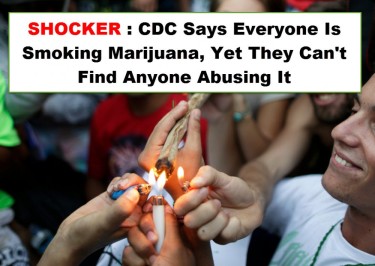
Teen Vaping Stats – How the CDC cooks up the books for clickbait headlines
It won’t surprise you if you’ve never come across any news about the National Youth Tobacco Survey (NYTS). In the interests of the foundation, this is an annual survey conducted by the Centers for Disease Control and Prevention (CDC). The results of the latest poll have caused some controversy lately for a variety of reasons. Many are only concerned with the CDC’s views as projected in their youth vaping data and are not looking at the results holistically. That’s why we’re here to help you find the best way to analyze and present the data.
The NYTS’ first prominent impact was in 2018, when Food and Drug Administration Commissioner Scott Gottlieb responded. He explained at the time that there was a youth epidemic that was throwing the entire industry into turmoil. The utterance that harked back to vaping in adolescence is on the tongue of many people. Tabloids and headlines jumped at it and many quickly saw youth vaping as a re-enactment of the War on Drugs and panic spread. As befits such things, restrictions and bans were added and the public was influenced.
It was sad to see that many avoided the other side of the story as this frenzy over the supposedly bad influence of vaping on teens evaded. Nicotine vaporizers were the salvation that made many addicts quit smoking. Very little was said about this as the FDA declared it was an epidemic. This aspect of the data received less airplay and was thus swept under the noise of the “epidemic”. It is therefore important that the data from the survey is carefully examined and interpreted.
Four years later, the same level of misunderstanding is still being applied to the NYTS data reports. This is largely due to misrepresentation by the media, healthcare professionals, legislators and the general public. The 2022 release will go down as the worst of them all, with inaccuracies glorified as quality content. This has led to inaccurate reporting by various media outlets on the subject. Worst of all was a report that “more than 1 in 4 teenagers use electronic cigarettes every day”. The actual data for what this outlet reported is that 2.5% of the youth used cigarettes daily, not 25%.
It’s easy to blame just this media’s feed for gross incompetence. However, if you pay close attention to how the information is presented by the CDC, we see a bigger problem at play. The CDC report states that more than one in four teenagers who reported using e-cigarettes used them daily. The removal of the clause that this statistic belongs to teens already using e-cigarettes gives a picture of how the problem arose.
This bug of misreporting stats in percent didn’t just start here, it’s been a problem for quite some time. While it’s common among academics and researchers to use such ratios and percentages, it doesn’t seem quite so for the average American. That said, it’s best to stay away from the complicated math and say it like it is in blanket terms. If this is not the case, we may need to calculate all available information to get a clear picture. However, these problems can be avoided if the CDC simplifies the data it makes available to the public.
The only reason the CDC has given through its spokesperson for these complications is that the prevalence is a ratio and not a rate. For this reason, the results are presented as proportions and not necessarily as percentages. Prevalence looks at the proportion of people with a condition at a given time in relation to those at risk of having that condition as a denominator. While this may be true, the CDC’s reports still confuse the public. The spokesman stated while addressing this that the panel is always ready to provide clarification to the public and make corrections if needed or inaccuracies are discovered.
Although the CDC has explained its rationale for the manner in which it was reported, it still isn’t ticking all the request boxes. This view was echoed by former Director of Action on Smoking and Heath (UK) Clive Bates in his interview with Filter. He was quick to question the CDC’s way of defining prevalence, as it is the author’s duty to be as clear as possible to avoid confusion.
He went on to question whether the CDC is directing its investigations and targets towards the right goals. According to Bates, if teenage vaping is to be presented as a societal problem, the focus should first be on how many children vape on a daily basis. This is the first place to start before we take the plunge into talking about how common those who vape vape. This will help clear up the confusion that already exists between the media and the public and will prevent us from making drastic decisions based on inaccurate data.
While it’s important that we fix some of the errors that have come out with the NYTS reports, there’s more work to be done. It is important that the public put pressure on the CDC to correct these mistakes and look inward at how to avoid them. We have said here that presenting the data in a clearer and more understandable way will help curb these problems. It is therefore left to the CDC to heed this advice and save us all from being misled.
CDC ON MARIJUANA RESEARCH, READ MORE…

CDC DECLARES THAT ANYONE USES CANNABIS CANNOT FIND ANY PROBLEMS

Post a comment: